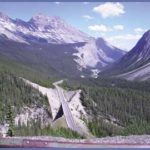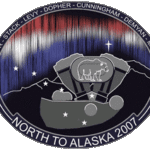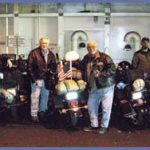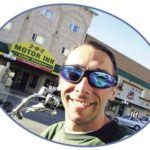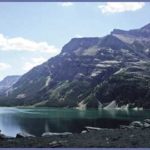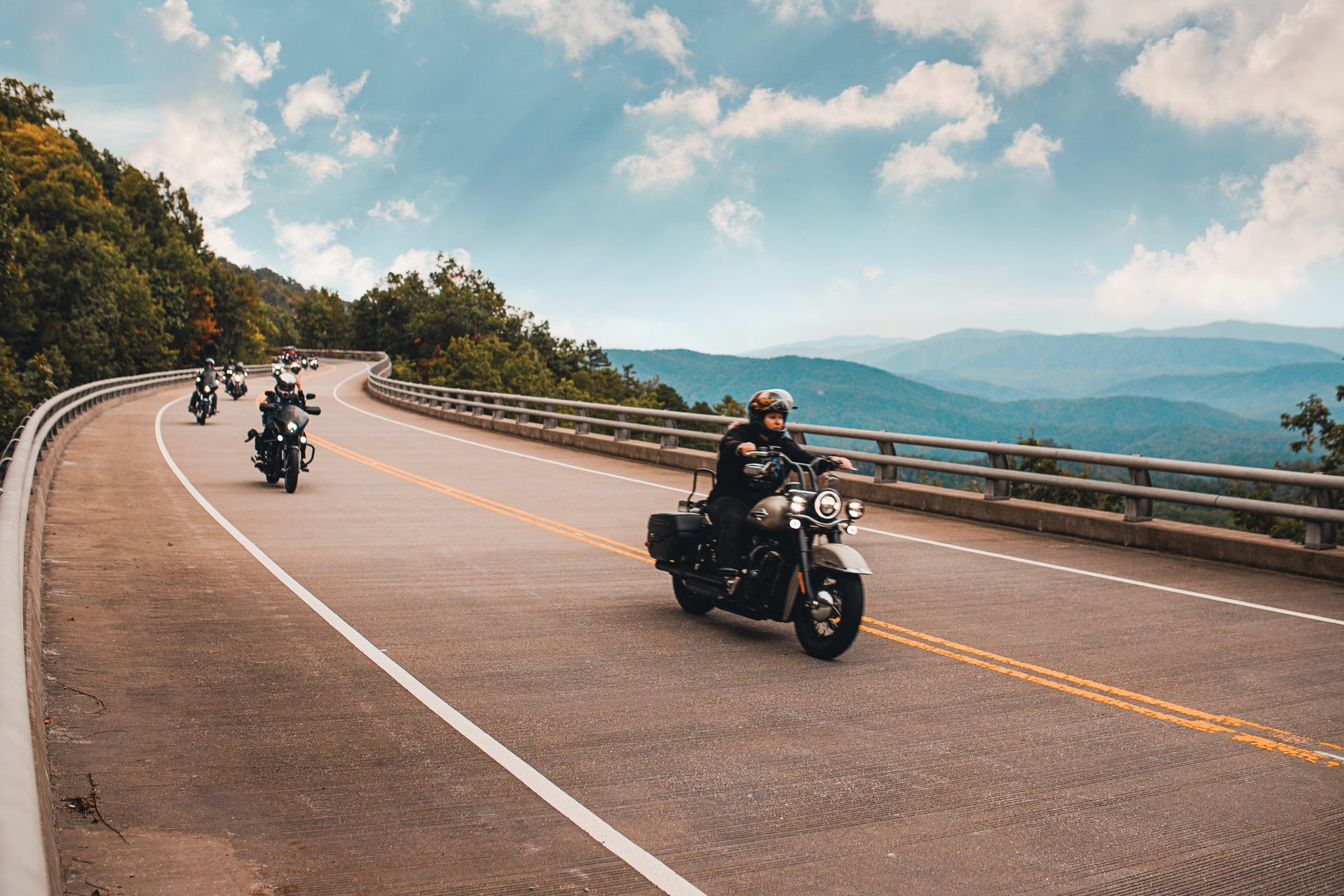The long road to inner peace
The adventure begins
Prologue
I’m an angry man. I’m angry at work, at friends, at life in general. But what angers me most at this moment is that the one large, glorious gap in an otherwise unbroken timeline of labor, boredom, bills, and missed connections is all too rapidly being submerged in the tide of the dross of living, rather than standing in my mind as the gleaming pinnacle of beauty, peace, restfulness, camaraderie, and happiness it should be.
This trip—this 30 days of barren, brutal adventure to the Arctic Circle and back—is shrinking rapidly into the distance and I’m doing everything I possibly can to hang on to the memory of it. The photos are archived, the best are passed around to friends and family, the notes written down—and yet my own recollection is beginning to match the dazed and confused expressions of the people I talk with about my trip. “You… went to Alaska?” There is simply no comprehension. And, yes, that makes me angry.
A great notion
“You can’t take a Sportster to the Arctic Circle!” I don’t recall who said it, and I don’t even recall if those exact words were used. All I remember is that over a year ago, the statement was made and that, instantly, became the challenge. Like a sodden anger, it seeped inside, unseen, undetected, where it festered and sometimes came to the surface at odd, brief intervals—a herpes of resentment against the statement. “You can’t take a Sportster to the Arctic Circle!” Oh yeah? I’ll take that bet.
By a mere twist of fate, I was to first visit Alaska by boat—a cruise—a birthday gift to me in honor of my 35th. I cruised the Alaskan shores in late September last year, the very last cruise of the season, and saw wonderful, mind-bending things—no drugs needed. For the first time in my life, I saw a bald eagle live and up close. I witnessed a glacier calving icebergs and heard the thunderous cannon crack as they broke off. I saw the super intense blue of ancient ice—a blue that just didn’t seem possible. I inhaled the clean air, tasted the best damn chowder of my entire life, and felt the enveloping chill of a foggy, rainy summer dawn among the giant spruces of Sitka.
I was hooked and had to go back. And this time I would ride; I would experience the wild interior of Alaska. I would ride to the Arctic Circle.
And in yet another twist of fate, last October, a rider on the Sportster.org e-mail list posted that he was going to Alaska. He’d like some company, but would go alone if he had to. The rider was Bruce Taylor, a.k.a. Bootie, and he didn’t have to ask twice. Erica Stack, the second rider to join Bruce and a close friend of his, was bubbling over with enthusiasm and yearning. In a closed Yahoo group, we kept organized, shared maps, articles, and photos—the products of our research. Erica and Bruce were intent on getting a group together that could function well on the road. One of Bruce’s posts stated flatly that “There’s no room for loners on this trip.” Ultimately, they fashioned a group of nine riders—most of us on Sportsters—that had a wide range of experience, mechanical ability, and stamina. The oldest rider, Tom McCort, was 76 and admitted in an early e-mail that this big trip would probably be his last hurrah, as he was finally reaching an age where long trips were getting to be too much.
Of course, none of us was getting any younger and most of us had jobs that made it difficult to get enough time off to do this trip. So what made us push so hard for it? I think each of us felt—if only subconsciously—that we are more than the sum of our infirmities, and if there’s any way to prove to ourselves that we are still human, still have a real connection to the world, a dirty, grinding trip, taking us to some of the most scenic areas of North America, would do it. In a very real sense, each of us was our own kind of Don Quixote, tilting at our own windmills. It was clear to me that this trip was most strongly a case of it not being about the destination, but about the journey. Whatever kind of knights we thought we were—angry at the establishment within which we live our ordinary lives and endlessly trying to win the favor of our oblivious Dulcineas—we at least had our goal.
We did not undertake this quest lightly. Many of the riders had health problems or general levels of fitness that were of some concern. If something should happen, if one of us should have an accident, heart attack, or seizure, will we be able to call for help? Early on we decided to rent a satellite phone. As it turns out, we were able to borrow one from a friend and we simply rented the SIM card for it—a very cost-effective solution to the problem.
And so planning went. Fires burned low over long winter nights and rainstorms were waited out in the spring while we all made plans, purchased camping equipment, and readied our bikes.
One concern I did not share with the group was my personal doubt that I was preparing my soul properly for this adventure. Not to get too psychoanalytical here, but I was a very pissed-off man before this trip; pissed off in a way that infected all my actions, thoughts, and choices. As usual with me, spending too long without leaving home had soured me on the good parts about it. I was angry getting out of bed, angry going to work. I was angry commuting home, I was angry fixing dinner. Yet I burned off enough anger in exercise to keep up the routine, and with every purchase of a piece of camping gear, I could feel the anger abate a little. But still I wondered if I would simply be ready to truly appreciate the gift of what I was about to experience, or would I be spending a great trip unable to disconnect from what was back at home?
Counting down, gearing up
As months turned into weeks dwindled down to days, communication turned to messages of tense expectation and professions of uncertainty about what to bring. For any long-distance trip, you want to be prepared for anything fate throws at you, but you don’t want to overpack, either. A smile and a pack of smokes makes a poor raincoat; but maxing out your bike’s gross weight with gear is hardly “lightweight, unsupported motorcycle travel.” (I borrow that last phrase from the tiny handbook of the same name, available from Aerostitch—it’s a great read for anyone who wants to get into long-distance biking.)
Everyone had their own style of gearing up and their own methods of packing. I admit to some jealousy of a rider like Dan Cunningham, who turned an aluminum plate into a wide, long, flat rack, threw all his shit into a giant Cabella’s waterproof sack, and rode off. Yeah, he had full saddlebags, and even brought his laptop in a waterproof case, but he still traveled the lightest of anyone in the group, except perhaps for Ron, who—as far as I could see—brought only his riding clothes, helmet, and two changes of underclothes. I don’t recall him ever putting up a tent or rolling out a sleeping bag, but he must have had those with him. Bruce himself took the prize for packing the most gear ever—though he had to resort to towing a trailer. He packed the largest tent, a cot, complete tool sets, camp chairs, and a full-sized camp stove. Bruce would eventually jettison much of the gear in the trailer and send it home, but not before learning what that kind of weight dragging behind you can do to your gas mileage.
Still, for sheer bizarro packing, maybe I won the prize. In addition to full saddlebags, I had a T-Bag on the P-pad (which doubled as a comfortable backrest), a patrolman’s bag on the rack in the back, and a sleeping bag and very large self-inflating mattress perched on top. Reports are that people behind me could barely see the top of my helmet. Still, it all rode well and I lost nothing off the load, despite the legendary battered surface of the Alaska Highway.
Part of the prep focused on the bikes themselves, of course. You’d be a fool not to perform at least a 10,000-mile service on the bike and put on fresh tires before an 11,000-mile trip. Most of us refreshed the brakes and oil, a few of us upgraded our front and rear shocks, and a couple of us modified our electrics, such as Bruce’s trailer wiring, Erica’s cigarette lighter sockets (for charging things), and my own additions of CB radio and GPS. Unless other people are serious about CB communication, mounting a CB isn’t worth the time; but the GPS was handy as long as I had it. The single improvement I made to my bike above and beyond previous trips was a specially fabricated saddlebag brace I had welded up. This proved to be worth its weight in gold, as I had doubts about the ability of the stock hardware (even the grade 9 replacement bolts I found on the Web) to withstand the punishing terrain I’d be going through and not shear off. But by bracing the bags against each other and then bolting the new brace upwards to the bottom of the rear fender, I managed to ward off all saddlebag problems.
Rolling rendezvous
Filled with anticipation—and with that mix of fear and thrill that accompanies the first meet-up of a group ride—I set off for Alaska. After a traffic-slammed ride out of Brooklyn, I met Dan at a gas stop on I-80. Dan, known to Sportster owners everywhere as Screwloose, is a take-the-bull-by-the-horns kind of guy and the kind of rider who, no matter what bike he’s on, you’d swear he’s on a sportbike. Though a fairly new rider, he’s a master of the bike. He knows it inside and out and has the tools to prove it, including a large tube of Loctite.
We bombed across Pennsylvania, and coasted into Akron, Ohio, meeting up with Bruce Taylor at his house. Ron Demyan, Lee Levy, and Tom McCort joined us the next day along the way. These were the easy first days—low mileage and smoothly paved roads. After a beautiful four-hour ferry ride across Lake Michigan on the SS Badger, we met up with our last group member, Erica. Now we had seven (two riders had to drop out due to work and family commitments) and that was the magic number. We began our Fantastic Voyage, traveling across the northern edge of the U.S. in 95–105-degree heat. We rode through the vastness of Minnesota, North Dakota, and Montana, finally entering some hillier riding when heading into Glacier National Park in the northern Rockies.
We all got to know each other a lot better during our first trial—a shortage of gasoline. It was a classic clusterfuck sorting that mess out as group members failed to realize anyone was stopped at first, then wasted more gas zooming back and forth. A second such incident was averted only because Dan had wisely packed a half-gallon of extra fuel in bottles underneath his homemade luggage rack.
These incidents highlighted several rules of the road for us as a group, for we had broken them all. We were lucky the problem was no worse than merely running out of gas. At our next stop, we worked out some of the ground rules for the rest of the trip. I don’t know how the others felt, but I was angry at myself again. As one of the riders with the most long-distance experience—solo and in groups—I have several road rules I just don’t break, yet I had allowed the group to overrule my common sense and it had gotten us in trouble.
After that, we changed our methods. For one thing, we stopped assuming gas would be available near the limit of our range and instead took gas stops any time they presented themselves after we’d ridden half our range. We were still in the States and had already run into stretches of 80 or 90 miles between stations.
There was a definite positive to the gas shortage incident, though: It was where the real adventure began. What I began to realize is that without surprise and adversity, a trip is not adventure, it is merely travel. Great scenery is always worth it, sure, but makes for poor storytelling later. But throw in some unexpected events, challenges to overcome, and a handful of strange characters, and the whole event sticks in the mind till the end of time.
Things got better and we traveled through Montana to Glacier National Park. It was beautiful, with scenery more spectacular than most of us had seen in Canada or Alaska. This is where we started seeing wildlife—mountain sheep in this case. The next morning we saw a herd of female caribou wandering through our misty campsite like quiet ghosts, just happily munching on young grass and paying no attention to the humans around them.
It was at about this point that we discovered Bruce’s keys had vibrated right off his key ring, leaving behind only his ignition key. This wouldn’t present a problem for him getting home, necessarily, but we had to cut the lock of his hitch so he could unhook, and the shotgun we had been so careful about bringing was now useless, as the case could not be unlocked. Yeah, we brought a gun. We were all pretty worried about bears, to tell the truth. Stories abound about bears and campers having confrontations and Bootie reasoned a scattergun would come in handy. We also all bought bear-strength pepper spray, to ward off any charging bears. (Ironically, it says right on the can that use of the product will attract bears—hey, cayenne pepper smells good, right?) As it turns out, we had no use for either one—mostly what one sees along the route to the Arctic Circle and back are the milder black bears, maybe a couple of grizzlies—and the bears don’t want much to do with humans. Still, the reports we’d been hearing all winter and spring of increasing—and deadly—bear attacks kept us on our guard the whole trip.
More rules of the road
Almost from the beginning, I rode sweep. As the rider with the best CB (two others had portables), it made sense, as I could radio ahead if there was trouble—that was the theory anyway. And as the rider with experience, it also made sense. As we rode, I formulated a series of maxims for the long-distance rider.
I got to see an awful lot of taillights and more than one item bouncing off a bike and skipping down the road. Most of the valuable items were retrieved, and “Is this yours?” was a common question at gas stops. Lee lost a sleeping bag, Bootie his helmet (we replaced that one), and I think various parts vibrated off most people’s bikes. I didn’t lose anything particularly valuable except for my CB antenna (easily replaced), but the vibrations killed my GPS mount in short order, leaving me to catch the GPS one-handed just as it made its Great Escape. After zip-tying it back in place, I formulated Long-Distance Maxim #1: You will lose your shit. I have come to be philosophical about this, even anticipating it. In the future, I will attach some loose bolts and nuts to my ride, just to soak up the vibrations and rattle themselves right off the bike—sacrificial bolts, if you will.
The loose gear wasn’t the only equipment to suffer. No one came on this trip with any illusions about keeping his or her bike clean, or even upright. We all wore good protection and bikes got dropped on a regular basis, though luckily, always at a standstill. Long-Distance Maxim #2 turned out to be: You will drop your bike, so count on it.
While we had cell phone service, we were in touch with various people back in the States who kept track of us and helped us get what was needed. But for most of the time, we could just as well have left our cell phones at home. There are no signals of any kind for the vast majority of the territory. Phones can only pick up CDMA signals (Verizon and Sprint) in Canada unless you’re in a large city. In Alaska, there is simply no service between major towns. Along the way, you’ll find that your batteries die, your chargers go missing, your MP3 player fritzes out because it got wet, and a single badly soldered connection in an EFI rig will stop you cold. My GPS, though advertised as waterproof and sold to motorcyclists, eventually stopped working: The screen filled with water and that killed the touchscreen ability. The power port soldering gave way and left the port rattling around inside the box. Long-Distance Maxim #3: Your technology will fail, so plan on it.
The roads in Canada and Alaska are tough on bikes, tough on equipment, and tough on riders. The road breaks everything, even partnerships. By the time we hit Whitehorse, about 3,200 miles into the trip, we had had several road meetings to sort out group riding styles, but we were all still getting pretty weary. Group riding plus distance equals even longer distances, in terms of time. This took its toll on our riders, especially Dan and Tom.
Tom was the first of the seven to leave the group and turn around for home. After running out of gas, struggling with the mileage and his transmission, and dropping his bike once, I think he figured that perhaps he could enjoy his vacation more if he went to see his stepson. So, shortly after we exited Glacier National Park, Tom bid us all farewell. He gave some of his camping gear to Bootie and Erica. Bootie’s back benefited enormously from Tom’s collapsible cot.
The next rider to leave the group was Dan, the epitome of the lone rider, who was truly having a hard time with our style, not to mention his bike. Just before getting to Whitehorse, his EFI system (2007 XL with an aftermarket setup) developed some problems. If Dan didn’t keep the bike under constant load, it would simply die, much as a carbureted bike with an intake leak would behave. Dan was frustrated that the group didn’t just stop long enough for him to solve the problem, and felt a lot of pressure to keep moving. He spent most of the night in Whitehorse outside troubleshooting his bike with his computer, and in the morning, decided to split off from the group. He encouraged us to go on while he stayed behind, finishing up repairs. He had found the problem, but now he was exhausted and needed sleep.
With a somber farewell, we left Dan to his own devices. We had learned by then that the major roads into and around Alaska weren’t exactly desolate, barren, uncivilized stretches. Oh, sure, there were sometimes hundreds of miles between real towns, but you could count on a gas pump every 70 miles or so. And up there, people are most helpful. If you had to flag a car down and hitch a ride because of a broken belt or something, you could. So leaving Dan behind at his insistence wasn’t exactly abandonment, though it sure as hell felt like it.



